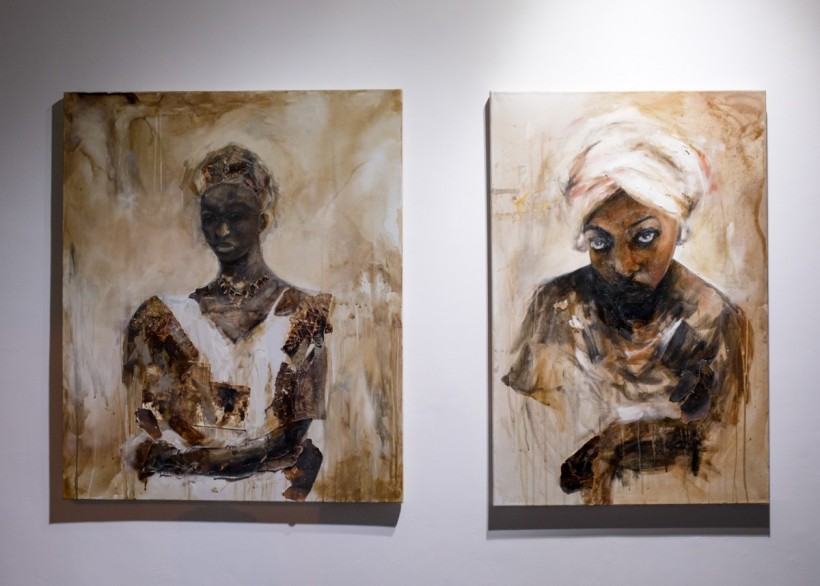Hyper Real, which showed at Concordia University’s student art gallery, VAV (Visual Arts Visuels,) until Nov. 30, showcased the work of nine black artists, juxtaposing themes like masculinity and femininity, isolation and connection, in a series of video art works, graphic prints, and eerily arranged baby-doll sculptures. The exhibition functioned as a mirror, reflecting the identities and personal narratives of the artists, but also provided viewers with a space to examine their own perceptions of black identity and race relations. While the works varied in form, each deconstructed stereotypical beliefs in an exhibition that was at once introspective and expressive.
One of the works in Hyper Real by Karl Obakeng Ndebele, a multidisciplinary South African artist based in Montreal, is entitled “Siyalima,” which translates roughly to “the cultivation stage of farming” in Ndebele. The work portrays South African history through video art, juxtaposing the past and present in a way that re-envisions storytelling methods through technology. The two-minute clip recounts a moment in colonial history in which early European settlers in South Africa often gave mirrors to local leaders as payment for their lands after convincing them that the mirrors could grant longevity or a second life.
The film depicts two individuals dressed in contemporary streetwear in a nondescript forest setting, holding mirrors that reflect their persons and their environment to the sound of hip-hop beats. “Siyalima” functions as a commentary on colonialist discourse, shedding light on historical racism and systems of oppression that continue to influence the lives of black South Africans today. While the mirrors bear literal meaning given their role in local and colonial relations, they also demand symbolic reflection from viewers. Ndebele’s work prompts consideration of current race relations in South Africa and allows the audience to question their own privilege.
Daniel Itiose, another artist included in the exhibition, works with oil paint, rendering large-scale, hyper-realistic paintings of human subjects. Itiose’s portraiture dissects perceptions of traditional masculinity and gendered norms by showing male subjects experiencing emotions that are otherwise perceived as ‘feminine.’ His work also challenges conformity that racialized individuals must undergo, addressing the audience’s autonomy and the privileges that come with that liberty. From afar, Itiose’s paintings look like photographs, capturing vulnerability and personal strife in close-up shots of male subjects. Upon closer examination, the works are composed of delicate brushstrokes, lending the work detail which could not be created with the click of a shutter.
Student artist nafleri also uses video art portraying a black individual slowly undressing as their body becomes a virtual canvas for ‘bootleg resources’, including radicalized comics, news segments, and a looped sound-bite of Eric Garner. Garner, a black man murdered by the New York Police for selling bootleg cigarettes, repeats “I can’t breathe” as the police choke him. Artist Theran Sativa, works with dolls found in Salvation Army donation centers. The dolls comment on identity construction through materiality the appropriation of the black body.
Hyper Real dissects tensions surrounding acceptance and personal narratives. The exhibition encourages viewers to reflect on their physical presence within the gallery, where acceptance is contingent upon the artists’ invitation. There is a confessional quality to the work in which oil paint and commercialized plastic toys convey the artist’s relationship to the past and present, their cultural histories, and racial discourse. While patrons experiences in the gallery may only be temporary, the artists and their works encourage lasting reflection on racial identity in a supposedly ‘post-racial’ world.









